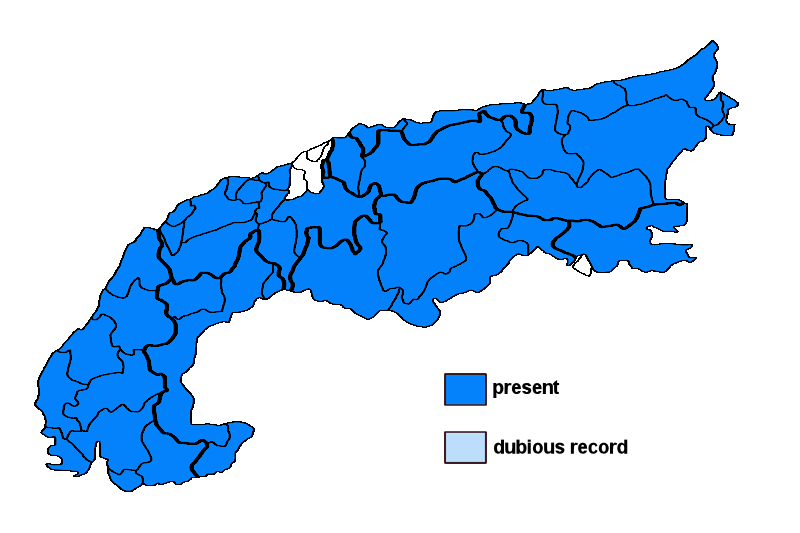Candelariella aurella (Hoffm.) Zahlbr. subsp. aurella
Syn.: Caloplaca epixantha (Ach.) Flagey, Caloplaca subsimilis (Th. Fr.) Th. Fr., Candelariella cerinella (Flörke) Zahlbr., Candelariella dispersa (Räsänen) Hakul., Candelariella epixantha (Nyl.) Sandst., Candelariella heidelbergensis (Nyl.) Poelt, Candelariella litoralis Hakul., Candelariella vitellina (Hoffm.) Müll. Arg. var. aurella (Hoffm.) A.L. Sm., Gyalolechia aurella (Hoffm.) Körb., Lecanora epixantha (Ach.) Nyl., Lecanora heidelbergensis Nyl., Lecanora vitellina (Hoffm.) Ach. var. aurella (Hoffm.) Ach., Lecidea epixantha Ach., Parmelia murorum (Hoffm.) Ach. var. aurella (Hoffm.) Ach., Verrucaria aurella Hoffm.
Lichenised.
Substrate: calciferous rocks, intermediate rocks (such as calciferous schists), living mosses, plant debris, lignum
Altitudinal range: from the mesomediterranean belt (potential vegetation: evergreen broad-leaved forests dominated by Quercus ilex) to the nival belt (above the lower limit of perennial snow and glaciers)
Note: a holarctic, subtropical to arctic-alpine, almost cosmopolitan species found on a wide variety of calciferous substrata, from limestone and dolomite to mortar, asbestos-cement and concrete, exceptionally on eutrophicated and dusty lignum and bark, sometimes starting the life-cycle on other crustose lichens; widespread and common throughout the Alps.
Austria: Vorarlberg; Tirol; Salzburg; Kärnten; Steiermark; Oberösterreich; Niederösterreich (incl. Wien); Burgenland; Germany: Oberbayern; Schwaben; Switzerland: Bern; Fribourg; Graubünden; Luzern; Schwyz; Ticino; Uri; Unterwalden; Vaud; Valais; France: Alpes-de-Haute-Provence; Haute-Alpes; Alpes-Maritimes; Drôme; Isère; Savoie; Haute-Savoie; Vaucluse; Var; Italy: Friuli; Veneto; Trentino Alto Adige; Lombardia; Piemonte; Valle d'Aosta; Liguria; Slovenia: Alpine and Pre-Alpine Slovenia; Liechtenstein





